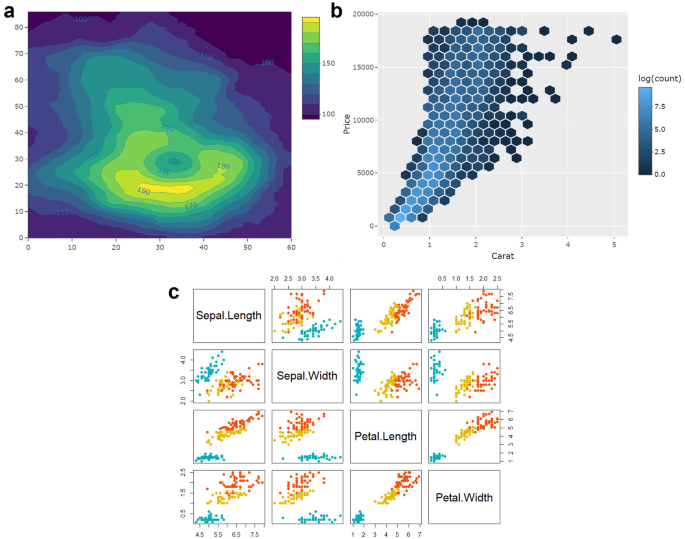
To a different location by dragging the cube). In addition, the cube can be rotated by means of the pointer (click anywhere in the window and move the pointer With a mouse, move the middle button up or down. Track pad with one finger and move up or down. Alternatively, one can press Control and press down on the Two fingers and moving up (zoom out) or down (zoom in). Making the cube larger (getting into the cube, so to speak). For our purposes, we refer to zooming out as making the cube smaller, and zooming in as It is sometimes a bit ambiguous what is meant by The data cube can be re-sized by zooming in and out. We can change the actual color of the bubble to create some moreĬontrast by right clicking on the rectangle next to the category of interest and adjusting the Fill Color. The two variables of interest, with the bubble color corresponding to the values of the categorical variable,Īs in Figure 12. The resulting bubble chart shows a scatter plot of At this point, we select the optionĬlassification Themes > Unique Values for the color. To the constant variable and Standard Deviation Color to manbronx. We create a new bubble chart and continue with kids2000 and pubast00 as the x and y-axis variables. We can again use the Selection Tool to first select all observations with bor_subb between 301 and 310 (inclusive),įor Manhattan, and then Append to Current Selection the observations with values between 101 and 110 (the Bronx).įinally, Save Selection as the manbronx variable. We also create a categorical variable, say manbronx, for the observations in Manhattan and the Bronx. Select Univariate and ASSIGN to set the constant value (e.g., 1). We first create a constant variable in the data table, by means of the Calculator –įirst use Add Variable to specify a name for the constant term (set it as an integer). This is yet another way to show potential structural change in the data.īefore we can illustrate this, we need to do some preliminary work. One particular useful feature is the Unique Values classification, in combination with setting the Size toĪ constant value. Same classifications we encountered in the map Chapter, including custom categories. The default is the Standard Deviation theme, where the colors correspond to standard deviational units away from the mean (red colors above the mean, blue colors below the mean). The order of the variables can be changed by means of the Up and Down buttons in the dialog.Īnother useful option is to select one of manyĬlassification Themes. In our example in Figure 2, we selected average people per household in 2000 ( hhsiz00), the percentage households with children under 18 in 2000 ( kids2000), the average number of years lived in the current residence in 2002 ( yrhom02), and the percentage households receiving public assistance in 2000 ( pubast00). Variables are added to the list on the right, the matrix in the background is updated with the additional scatter plots. The left arrow < is there to remove a variable from the Include list.Īs soon as two variables are selected, the scatter plot matrix is rendered in the background. One can double click on the variable name to move it to the right-hand column). The design of the interface is such that one selects a variable from the list on the left and clicks on the right arrow > to include it in the list on the right (alternatively, This brings up a dialog through which variables can be added or removed, shown


To provide a sense of the univariate distribution.įigure 1: Scatter Plot Matrix toolbar icon In GeoDa, the diagonal elements also contain a histogram for the variable in the corresponding row/column Similar to the insight provided by a correlation matrix.Įven though this method is included in this Chapter, it is not really a multivariate exploration, but ratherĪ collection of bivariate explorations for multiple variables. Of the scatter plots, and the extent to which this points to a significant bivariate relationship, The main interest is in the magnitude and sign of the slope in each

General, however, while the scatter plot matrix shows the linear association between Variance one), it is the visual counterpart of a correlation matrix. When applied to standardized variables (with mean zero and The individual scatter plots are stacked such that each variable is in turn on the x-axis and on A scatter plot matrix visualizes the bivariate relationships among several pairs of variables.


 0 kommentar(er)
0 kommentar(er)
